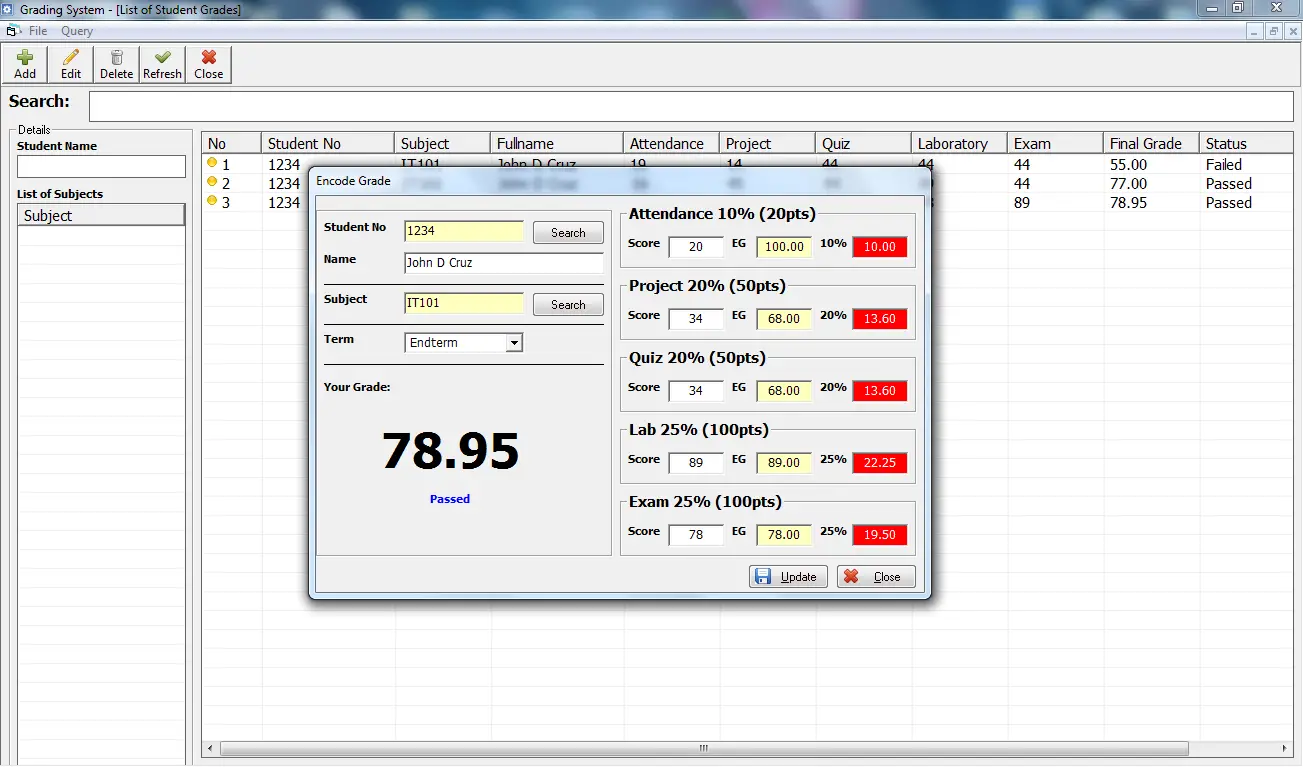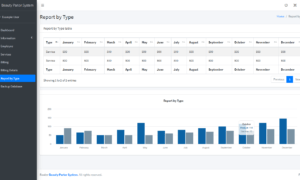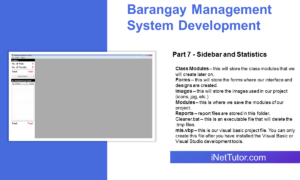Capstone Project Topics for Grading System
Grading is an essential part of any educational system, and with the advancement of technology, the traditional manual grading system has become outdated. An online and automated grading system is an effective solution for educational institutions to manage and automate the grading process efficiently. With this in mind, many IT and computer science students are looking for capstone project topics related to grading systems. In this blog post, we will explore various capstone project topics for grading systems, including online grading systems with grade viewing, grading and grade viewing system use case diagrams, web-based grading systems, and more. Whether you are a student or an educational institution looking to streamline your grading process, this blog post will provide you with insightful information and useful tips for choosing the right capstone project topic for grading systems.
Introduction
Table of Contents
Automated grading systems are becoming increasingly popular in the education industry. With the advancement of technology, grading systems are no longer limited to paper-based methods. In the field of Information Technology (IT), capstone projects have become a standard requirement for students to demonstrate their skills and knowledge in their chosen field. Developing a capstone project on an automated grading system is a great way for IT students to apply their skills and knowledge to a real-world problem. In this blog post, we will discuss various capstone project topics for an automated grading system. Whether you are a student looking for ideas or an educator looking for ways to improve your grading system, this post is for you.
Benefits of Automated and Online Grading System
In today’s digital age, automation has become an integral part of our lives. The education sector has also benefited greatly from automation, especially with the introduction of online and automated grading systems. These systems offer several benefits to both educators and students.
One of the most significant benefits of an online grading system is that it eliminates the need for manual data entry and grading, which can be a time-consuming and error-prone process. By automating this process, teachers can quickly grade assignments and provide timely feedback to students. Additionally, online grading systems can improve the accuracy of grading by eliminating errors such as miscalculations or incorrect entries.
Another advantage of online grading systems is that they allow for greater transparency and accountability. With these systems, students can easily access their grades and feedback, giving them a clearer understanding of their academic performance. Teachers can also easily track student progress and identify areas where they may need additional support.
Online grading systems can also facilitate communication between teachers, students, and parents. Teachers can easily share information about grades and assignments with students and parents, making it easier to collaborate on academic goals and address any concerns.
Overall, an online and automated grading system can improve the efficiency, accuracy, and transparency of grading, benefiting both educators and students. As technology continues to evolve, we can expect to see even more innovative solutions for automating the education sector.

List of Topics
- Online Grading with Grade Viewing Conceptual Framework – This topic pertains to the overview or framework of an online grading system that includes the feature of grade viewing for the students and teachers. It includes the objectives, scope, and requirements of the system.
- Grading and Grade Viewing System Use Case Diagram – This topic discusses the different use cases or scenarios that the grading and grade viewing system can perform. It presents a diagram that shows the actors, use cases, and relationships between them.
- Free Online Grading System with Grade Viewing – This topic refers to an online grading system that is offered for free and has the feature of grade viewing. It may have limited functionalities and features compared to paid online grading systems.
- Web-Based Grading System ER Diagram – This topic focuses on the entity-relationship (ER) diagram of a web-based grading system. The ER diagram illustrates the relationships and attributes of the entities involved in the grading system.
- High School Grading System in PHP and MySQL – This topic presents a grading system specifically designed for high schools and developed using PHP and MySQL as the programming language and database management system, respectively.
- Online Grading System Data Flow Diagram – This topic presents the flow of data within the online grading system. The data flow diagram shows the processes involved in the grading system and how data moves from one process to another.
- K12 Grading System Methodology Chapter 4 Documentation – This topic pertains to the methodology chapter of a capstone project on a K12 grading system. It discusses the research design, data gathering techniques, data analysis methods, and other related aspects of the project.
- K-12 Grading System Review of Related Literature – This topic focuses on the literature review of a K-12 grading system. It presents the existing studies, researches, and other related literature about the topic.
- Online Grading System in PHP, MySQL, and Bootstrap – This topic pertains to the development of an online grading system using PHP, MySQL, and Bootstrap. It discusses the features and functionalities of the system, as well as the technologies used in its development.
- Grading System Database Model and Design – This topic focuses on the database model and design of a grading system. It includes the entities, attributes, and relationships of the grading system that are necessary for efficient and effective data management.
- Online Grading System with Grade Inquiry Chapter 3, 4 and 5 – This topic discusses the third, fourth, and fifth chapters of a capstone project on an online grading system with grade inquiry. These chapters cover the system design, implementation, and testing.
- Online Grading System with Grade Viewing Capstone Project – This topic pertains to a capstone project on an online grading system with grade viewing. It includes the objectives, scope, methodology, and other related aspects of the project.
- Online Grading System with Subject Reservation System using PHP and MySQL – This topic discusses the development of an online grading system with an added feature of subject reservation using PHP and MySQL. The system allows students to reserve their preferred subjects for the next academic term.
- Online Grading System with Online and SMS Grade Inquiry – This topic presents an online grading system with the feature of online and SMS grade inquiry. This feature enables students and parents to access their grades through the internet or SMS.
- Online Grading and Grade Viewing System – This topic discusses the development of an online grading system that includes the feature of grade viewing. The system enables teachers to input and manage student grades, and students to view their grades online.
- Automated Grading System in Visual Basic and MySQL – This topic pertains to an automated grading system developed using Visual Basic and MySQL. The system automates the process of grading assignments and exams
Tips on how to design and develop an effective grading system
Designing and developing an effective grading system can be a challenging task, but it’s crucial for ensuring fairness and accuracy in evaluating student performance. Here are some tips to help you create an efficient and effective grading system:
- Define your grading criteria: Before you start designing your grading system, determine the criteria that you will use to evaluate student performance. Consider the learning objectives and outcomes for the course, as well as the type of assessments you will use.
- Use clear and consistent language: Ensure that the language used in the grading system is clear, concise, and easily understandable. Avoid using jargon or technical terms that may confuse students.
- Develop a grading scale: Determine the grading scale that will be used for the course, whether it be a letter grade or a numerical grade.
- Provide timely and constructive feedback: Feedback is an essential part of the grading process. Ensure that you provide students with timely and constructive feedback to help them improve their performance.
- Consider the use of technology: The use of technology can help streamline the grading process and make it more efficient. Consider using software or applications that can automate grading tasks.
- Ensure accuracy and consistency: It’s essential to ensure that the grading system is accurate and consistent to avoid any confusion or bias. Develop clear guidelines for grading and ensure that all instructors or graders follow the same standards.
By following these tips, you can create an effective grading system that is fair, consistent, and provides valuable feedback to students.

Technology Stack
There are several technology stacks that can be used to develop an online and automated grading system. Here are some of the possible options:
- PHP, MySQL, and Bootstrap: This stack is popular for web development because of its simplicity and ease of use. It is also open-source and has a large community of developers.
- Java, Spring Boot, and PostgreSQL: This stack is widely used in enterprise-level applications. It provides a scalable, secure, and reliable solution for complex systems.
- .NET, C#, and SQL Server: This stack is suitable for Windows-based systems and provides a robust and scalable solution for web applications.
- Ruby on Rails, MySQL, and Bootstrap: This stack is known for its simplicity and rapid development capabilities. It is also open-source and has a large community of developers.
- JavaScript, React, and Node.js: This stack is popular for developing modern, single-page applications that provide a fast and responsive user experience.
When choosing a technology stack, it is important to consider factors such as scalability, security, performance, ease of use, and cost. It is also important to choose a stack that aligns with the skillset of the development team.
Ultimately, the choice of technology stack will depend on the specific requirements of the grading system, as well as the needs and preferences of the development team. By carefully evaluating the available options, it is possible to select a technology stack that provides a solid foundation for building an effective and efficient online and automated grading system.
Summary
Capstone Project Topics for Grading System can be an exciting and challenging project for IT students who want to explore and develop their skills in software and web development. The use of technology stack in developing an effective grading system can bring a lot of benefits, including accuracy, efficiency, and security. The possible technology stack includes programming languages such as PHP, Python, and Java, frameworks such as Laravel and Django, and databases such as MySQL and MongoDB. The capstone project can be designed and developed using ER diagrams, data flow diagrams, use case diagrams, and other software design patterns. Through this project, students can gain practical knowledge and experience in designing and developing an online and automated grading system, which can help schools and institutions in managing and organizing their grading and evaluation processes.
Readers are also interested in:
- 30 Unique Capstone Project Topics for Information Technology
- Android Application Free Capstone Project
- PHP MySQL and Bootstrap Capstone Projects
You may visit our Facebook page for more information, inquiries, and comments. Please subscribe also to our YouTube Channel to receive free capstone projects resources and computer programming tutorials.
Hire our team to do the project.


